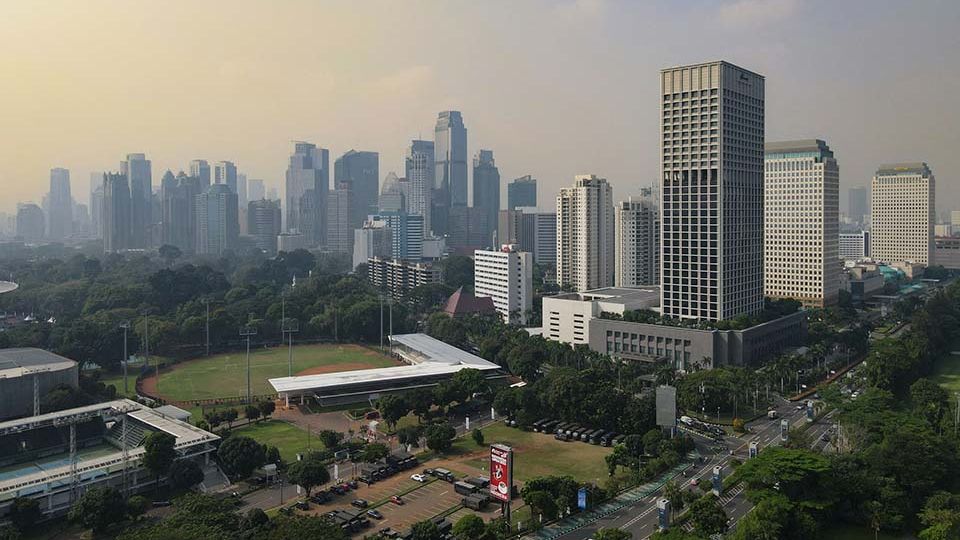March 21, 2025
JAKARTA – Offices in Jakarta are shifting toward green practices as developers seek to leverage growing market demand for environmental compliance amid an excess supply of office space.
Property consultancy Colliers noted in a report published on March 3 that “green-certified buildings are relatively sparse” in Greater Jakarta. Forty-six office buildings in the capital region have received the accolade, which still beats the paltry 10 certificates issued for industrial facilities and even fewer for residential and retail properties, according to the report.
The certificates, which are subject to an environmental performance assessment and commitment to eco-friendly practices, include Leadership in Energy and Environmental Design (LEED), Green Mark and Greenship and the Jakarta office buildings that have received them include the World Trade Center, Capital Place and Pacific Century Place.
A report released on Feb. 13 by property agency Knight Frank shows that green-certified offices saw strong growth in occupancy rates to around 73.4 percent in the second half of last year, with average price growth at 4 percent year-on-year (yoy).
“Price competition and tenant market conditions make green office an alternative for occupiers interested in improving [their] office quality,” the report states.
Knight Frank previously reported that green offices accounted for 14.1 percent of overall office stock in Jakarta’s central business district (CBD), equivalent to 1.02 million square meters of total supply.
Read also: Housing Ministry launches development of free properties in Tangerang
Ferry Salanto, senior associate director at Colliers, told The Jakarta Post on March 12 that demand for green offices was largely driven by multinational companies that were required to have green-certified offices.
While he noted that the sector faced challenges, notably the higher development costs for adjustments in materials and energy usage, this was offset by higher demand from tenants that considered green buildings standard practice.
Bagus Adikusumo, head of office services at Colliers, said the trend for compliance with environmental, social and governance (ESG) standards meant green building were “no longer merely recommended and encouraged, but required” for multinational companies to demonstrate their commitment to sustainability.
He acknowledged, however, that even the green segment was still impacted by the oversupply issue in the overall office market as demand growth continued to lag behind supply growth.
Cumulative office building supply in Jakarta increased in the past decade to exceed 10 million sqm in 2024, but demand has declined since the pandemic, with occupancy rates averaging 70 percent, compared to nearly 80 percent recorded in 2019, according to a report by property consultancy Jones Lang LaSalle (JLL).
Rental rates of Grade A offices in Jakarta’s central business district declined 1.10 percent last year, with the report noting that “the market continues to be impacted by cost-saving measures and the implementation of new workplace strategies”.
Non-CBD offices have also seen a 1.9-percent drop in rental rates in 2024, but it “remained relatively stable” from previous quarter.
“Companies continue to focus on cost savings, and the implementation of new workplace strategies, impacting the overall market dynamics. As a result, landlords of office buildings with lower occupancy rates are still expected to offer competitive rents to attract tenants,” the report reads.
In the face of excess supply, the market had responded by pausing new office developments, while many of the existing properties had been retrofitted to qualify for green credentials, notwithstanding the additional costs, Bagus explained, adding that buildings without such certification would struggle to compete with certified buildings.
On the other hand, the higher investment into green offices is not easily recouped under the pressure of tight competition in the oversupplied market.
“There are additional costs and time [involved] to build [green building], so the rental price should be higher, [but the tenants] have greater bargaining power, making rents competitive and [keeping the rates] below what developers expected,” he said.
Yet Bagus believes going green will all pay off eventually, once the market bounces back its “golden age” on the back of an improving economy and a restored balance between supply and demand.
Read also: A call for a decisive transition to a green economy
Syarifah Syaukat, senior research advisor at Knight Frank, also noted that challenges accompanied the opportunities in the green office sector, including the higher investment for new buildings as well as technical and financial constraints in retrofitting existing properties.
However, she expressed optimism about prospects in the green office sector, citing the increasing adoption of the green concept with a 7 percent rise of new green office stock over the past four years.
Generally, she added, green practices were increasingly adopted in new office construction.
“This growth aligns with growing public awareness of sustainability, global investors’ demand for ESG compliance and regulations that encourage energy efficiency and environmental management; hence, demand for green offices will keep rising,” she told the Post on March 13.
Ferry from Colliers suggested that the rise of green financing schemes providing incentives and lower interest rates to streamline the transition to green infrastructure could unlock opportunities to handle the costs.
Christina Ng, head of facilities management at Colliers, told the Post on March 13 that actors in the sector needed a better understanding of prevailing regulations, certification options and funding schemes.
“There is a regulation from the Financial Services Authority (OJK) to support environmentally friendly investment, yet the market still lacks understanding of how to access the green funding,” she said.


